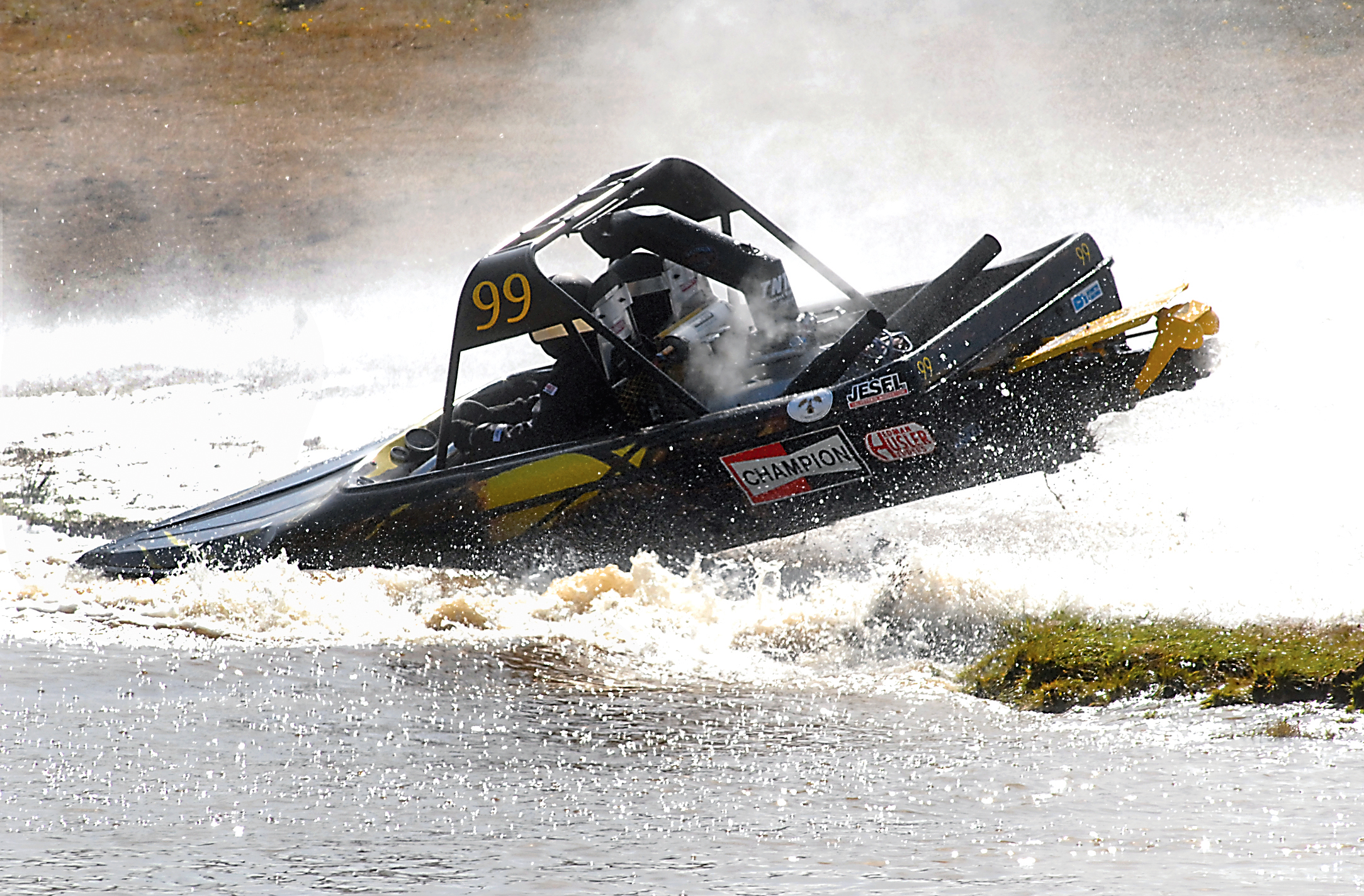PORT ANGELES — A family dynamic lies at the heart of much of sprint boat racing.
A spin through racing programs or a walk through the pits will find many drivers, navigators and crew members sharing not just the same last names, but a shared interest and devotion to the sport.
This dynamic holds true for three sprint boat race teams hailing from the North Olympic Peninsula at Saturday’s Sprint Boat Races at Extreme Sports Park.
There’s a father/daughter duo in Sequim driver Paul Gahr and his navigator daughter
Taylor Gahr in the 400-class Live Wire No. 2.
A stepmother and stepson combination exists with driver Dillon Cummings and his navigating mom, Teri Cummings, also of Sequim, in the Modified-class TNT Jeepers Creepers No. 99.
And there’s a stepfather and stepdaughter duo, with stepfather Dan Morrison and stepdaughter Cara McGuire, who hail from Port Angeles, in the Unlimited-class Wicked Racing No. 10.
Morrison and McGuire have been a part of each other’s lives for nearly 25 years, but the conflict and turmoil that can characterize many similar stepparent-stepchild relationships was never really an issue through the years.
“We’ve always got along great and never really have had any of those issues, unless Cara has a different opinion,” Morrison said.
McGuire was quick to agree with her stepdad,
“Oh, no, nothing like that,” McGuire said.
After eight-plus years racing together in the tight confines of a sprint boat reaching peak speeds of 90 to 100 miles per hour, their relationship has only grown closer.
This had to be.
Even in a sport that goes to great lengths to be safety conscious — harnesses, seat belts and helmets, and boats that have roll cages and are designed to try and wobble rather than flip — accidents can and will happen.
With Morrison piloting the boat, McGuire is at his right hand, providing step-by-step hand signals to help guide the boat through the watery race course.
McGuire, like all sprint boat navigators, is along for the ride, but that doesn’t mean the navigator’s contribution isn’t sorely needed.
The necessity for a navigator comes down to a fundamental difference between sprint boat racing and other motor sports such as unlimited hydroplanes, NASCAR or IndyCar racing.
Racers in those sports typically travel around circular tracks, though there are some road races that require both left and right turns. But they receive ample on-course practice time before the main event.
This is not the case with sprint boat racing.
“We don’t get to know the rotation through the maze of islands until the night before,” Morrison said.
“Then we have 12 hours or so to memorize the route, and put it all in our head.”
Morrison and McGuire refrain from trying to recall the race course on a turn-by-turn-basis.
Instead, they both break down the track into sections in an effort to group the turns in a more manageable manner.
“I try to make sure I have it all completely down before I go to sleep on the night before a race,” McGuire said.
“That way I can try to dream about the course.”
On race day, the pair will do a visual walkthrough, pacing out the turns they’ll take when the green flies and Morrison hits the gas pedal.
“As we are going we have to recall 24 to 37 corners depending on the setup from memory,” Morrison said.
“Her hand in my face reassures me that I’m thinking right because we are going so fast that if you put any thought in your head about what just happened to you, you will miss that next corner.
“It happens too quick to be thinking backwards. You always have to think forward no matter what happened to you out on the course.”
While both pilot and navigator memorize the route, Morrison takes much comfort in McGuire’s on-board contribution.
“The reassurance I get from her hand signals is what makes me keep moving forward,” Morrison said.
“If I’m questioning anything, I look at her hand and I always keep her hand in my peripheral vision
“I’m constantly looking at her hand. The palm of her glove is white and the back is black and I can always see the direction she is pointing.”
McGuire thinks the confined quarters during the speedy sprints have helped grow the duo’s relationship.
“I think when you are in the boat, there’s so much body language and reading of each other’s thoughts that happens and that would have never happened unless we started racing,” McGuire said.
Communication is still nonverbal, even after they cross the finish line.
“When we get into the spinout pool and motor up to the trailer it’s still too loud to hear each other, but the race is over and we’re so excited and have so many things to say to each other,” McGuire said.
Morrison agrees.
“I’ll slap her leg, or she’ll grab my arm, there’s just so much adrenaline coursing through us after a run,” Morrison said.
When the engine shuts down the words come in an excited stream of consciousness.
“It’s half sentences everywhere, and it’s amazing to feel and to share with the person out there who just went through the same thing,” Morrison said.
The hours of travel time spent together heading to races around the northwest, and even to such far-flung locations such as Phoenix and South Dakota, plus promotional appearances to grow the sport at boat and trade shows and other motor sport events, also have tightened their bond.
“For the most part Cara and I are very close and our camaraderie and relationship have all grown out of this, and it’s really cool that it’s boat-related and we have this common interest,” Morrison said.
“We talk racing, we think racing and we just love this sport.”
________
Sports reporter Michael Carman can be reached at 360-452-2345, ext. 5152 or at mcarman@peninsuladailynews.com.

